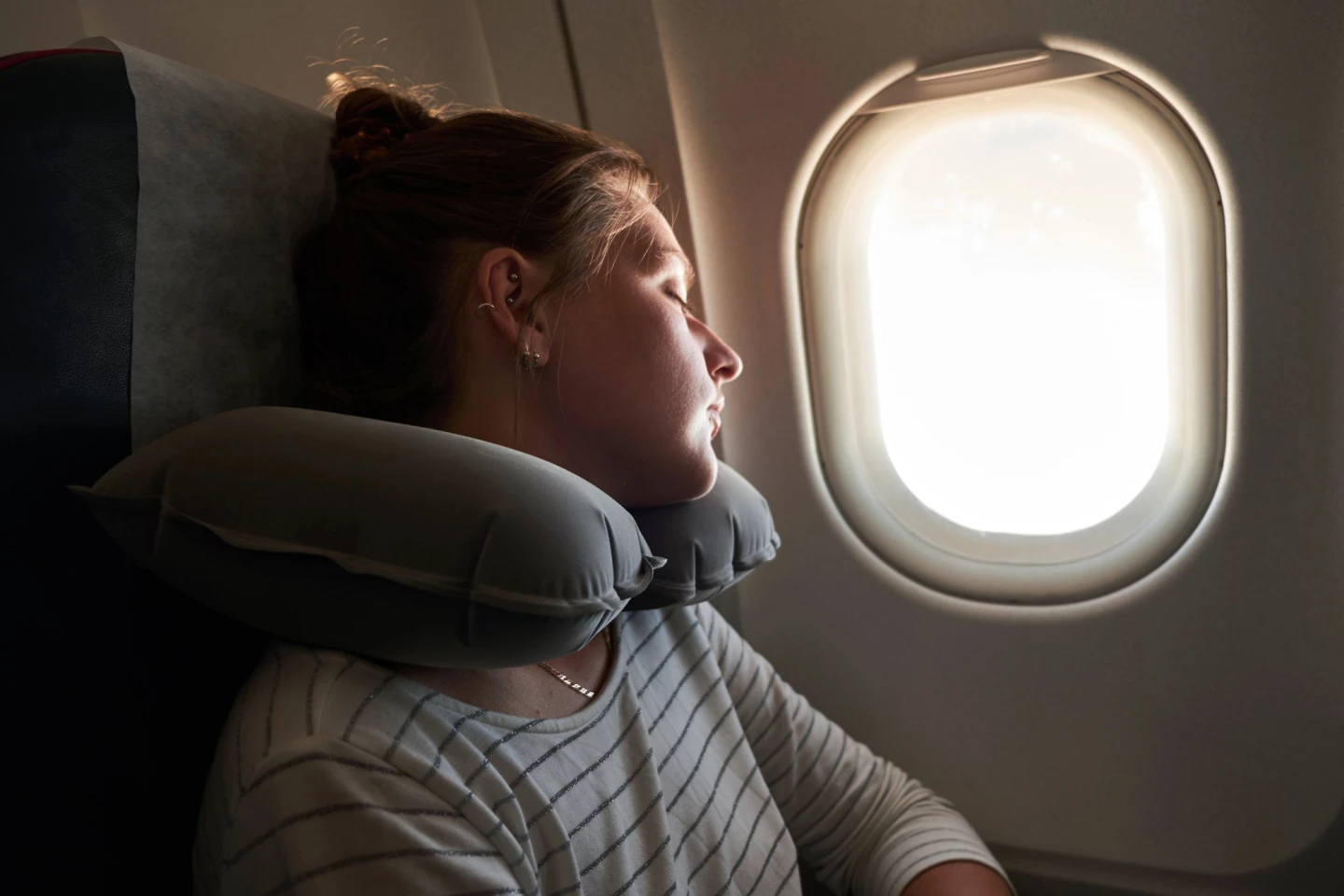Let’s be honest: long-haul flights are horrible. Screaming babies, other passengers moving about, and meal trolleys rolling up and down the aisles make sleep difficult, if not impossible. For many passengers, the only relief they have on a long-haul flight comes from the alcohol cart.
However, a new study, the first of its kind, by researchers from the Institute of Aerospace Medicine at the German Aerospace Center and RWTH Aachen University found that the combination of booze and cruising altitude cabin pressure can be detrimental to heart health.
Airplanes fare very well at high altitudes; fuel consumption efficiency is better, and they can avoid bad weather and turbulence. Humans, not so much. Above 8,000 feet (2,438 m), the oxygen content in each breath of air becomes very low. Because the typical cruising altitude for commercial airliners is between 30,000 and 40,000 feet (9,144 m to 12,192 m), the cabin is pressurized to a level equivalent to 8,000 feet. Despite this, even healthy passengers can experience a slight drop in the amount of oxygen in the blood (oxygen saturation or SpO2), down to around 90%.
An SpO2 below 90% in these circumstances is defined as ‘barometric hypoxia,’ low blood oxygen at higher altitudes. In barometric hypoxia, the tissues aren’t getting sufficient oxygen, so the heart pumps faster to provide it. Alcohol has a similar effect on the body. Previous studies have shown that it relaxes blood vessel walls, increasing heart rate during sleep. So, the researchers wanted to investigate what happened when sleeping ‘passengers’ were exposed to both alcohol and cruising altitude.
They recruited 48 healthy study participants aged 18 to 40 and randomly assigned them to two groups of 24, stratified by age, gender, and weight. The control group slept in a sleep laboratory under normal pressure and oxygen conditions, whereas the "InFlight Group" slept in a simulated crew-rest compartment where the pressure simulated cruising altitude 8,000 feet above sea level. (For added realism, the researchers also played noise recorded during a flight from Cologne to Cairo to this group.)
Twelve participants in each group slept for four hours without having drunk alcohol, while the other 12 slept for the same time, having previously consumed it. All participants then had two nights’ recovery before repeating the experiment in the reverse order (that is, the participants who slept following alcohol consumption slept without it and vice versa). Participants slept lying down, mimicking the situation of passengers traveling in first and business class.

The target blood alcohol concentration (BAC) was 0.06%, which roughly sits between the US and Western European BAC limits for driving: 0.05% and 0.08%, respectively. So, at 11:15 p.m., alcohol-drinking participants had an amount of pure vodka equivalent to two cans of 5% beer or two glasses of 12% wine. Participants’ sleep cycle, SpO2, and heart rate were monitored continuously until 4 a.m.
The researchers found that the combined exposure to cruising altitude cabin pressure and alcohol during sleep caused SpO2 to drop to an average of 85.32% and increased the average heart rate to 87.73 beats per minute (bpm), compared to 88.07% and 72.90 bpm in the non-alcohol/cruising altitude group, 94.97% and 76.97 bpm in the alcohol group, and 95.88% and 63.74 bpm in the non-alcohol/normal oxygen/normal pressure sleep lab group. The SpO2 of the combined exposure group fell below the clinical hypoxia threshold of 90% for an average of 201 minutes, compared to 173 minutes in the cruising altitude group and zero minutes in both sleep conditions. Deep sleep was reduced to 46.5 minutes under the combined treatment exposure, compared with 84 minutes and 67.5 minutes, respectively, in the alcohol and non-alcohol sleep conditions.
“Passengers frequently consume alcoholic beverages during long-haul flights before falling asleep,” said the researchers. “Despite this being a routinely occurring situation, the combined impact of moderate alcohol consumption and inflight hypobaric conditions on sleep, blood oxygen saturation (SpO2) and heart rate is unknown. In young and healthy adults we found a decrease in SpO2 to a median of 85% during sleep under the combined exposure that was accompanied by an increase in heart rate and disturbed sleep.”
The researchers say their findings have implications for older, less healthy passengers and are calling for changes to the serving of alcohol on flights.
“Higher doses of alcohol could amplify these observed effects, potentially escalating the risk of health complications and medical emergencies during flight, especially among older individuals and those with pre-existing medical conditions,” they said. “Practitioners, passengers and crew should be informed about the potential risks, and it may be beneficial to consider altering regulations to restrict the access to alcoholic beverages on board aeroplanes.”
The study was published in the journal Thorax.






